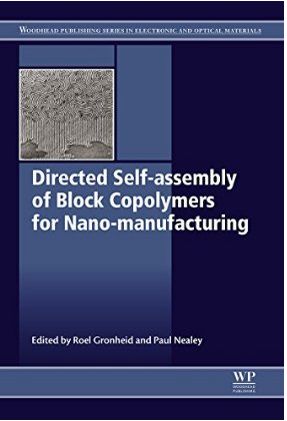We have written a book chapter about the self-assembly of block copolymers by graphoepitaxy. In the fabrication of a desired block copolymer (BCP) nanostructure for a particular application, a key challenge is the control of the BCP microdomain assembly. Graphoepitaxy is a solution for this challenge. Graphoepitaxy provides multifaceted mechanisms to order and directing microdomains and to fabricate complicated single-layer or multilayer structures over large areas. Topographical templates can be fabricated using different top-down lithography or self-forming methods. These templates direct the self-assembly through key mechanisms such as commensurability, lateral ordering, and confinement effect. Hence, many different morphologies, either equilibrium or nonequilibrium, can be controlled to produce desired nanopatterns. To date, BCP graphoepitaxy has been employed in many applications, from nanoelectronics to medical filters and memory storage to biological substrates.
The book chapter by S. M. Nicaise, A. Tavakkoli K. G. and K. K. Berggren, “Self-assembly of block copolymers by graphoepitaxy”, In: Directed self assembly of block co-polymers for nano-manufacturing, R. Gronheid and P. Nealey, Woodhead Publishing, 197-230 (2015).
